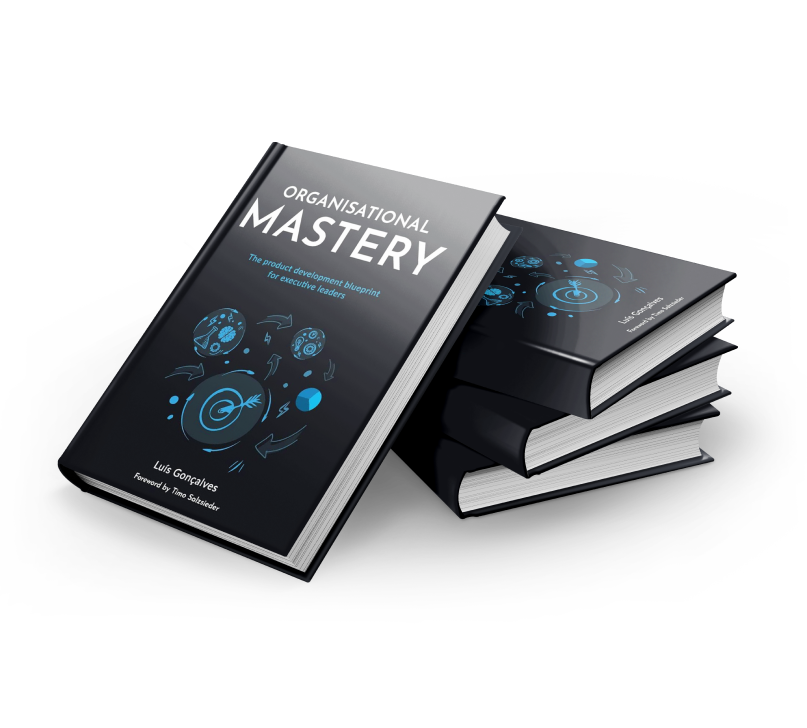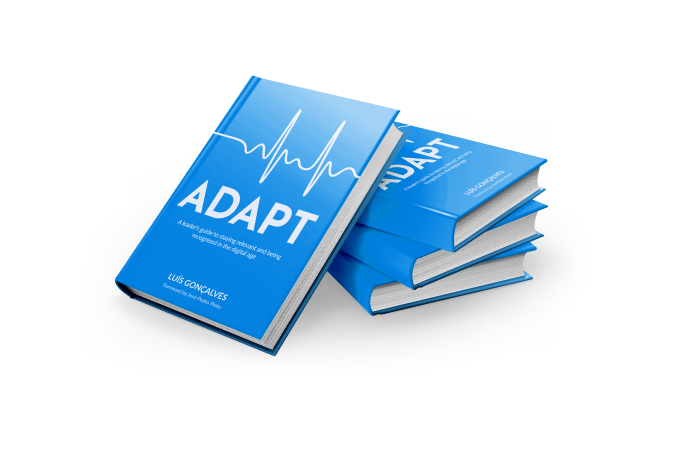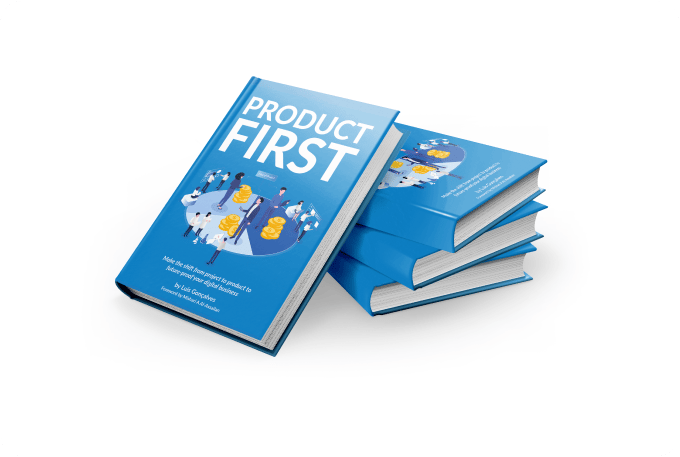Share this
Communities of Practice Guidelines For Your Business
by Luis Gonçalves on Jan 13, 2024 5:51:51 AM
Communities of Practice have been an efficient way of leveraging businesses over the past decades, and it’s a mandatory practice for every Digital Product Company.
ADAPT Methodology® is a unique Digital Product Development framework to change traditional project-centric companies toward product-led companies!
Society changed and leaders need support in the way how they lead and design their digital product organizations, that is the reason why the ADAPT Methodology® was created, but now let’s get a deep dive into Communities Of Practice if you want to get a deeper knowledge about this topic.

Communities of practice are a well-established organizational framework designed for cultivating and sharing knowledge capital among the corporate workforce.
But how do you set it up according to the needs and structure of your company? How do you ensure that it will benefit your organization and help you achieve your goals? How do you utilize CoPs to drive employee performance and improve business strategy?
Communities of practice are best characterized as networks of people who have common goals and interests.
Participation in the community is not intentional (or should be “organic” or unstructured) and the relationship among members is informal and spontaneous.
These unique qualities of CoPs make them different from other learning frameworks and make them naturally effective in cultivating knowledge and empowering people to do better in their work.
The Value of Communities of Practice
CoPs offer short-term and long-term value to the organization.
Short-term benefits to members include:
- Help with their everyday challenges at work
- Encouragement from peers
- Access to expert knowledge
- Fun at work
- Confidence (as they gain more knowledge and skills)
Meanwhile, the long-term value to members are:
- Personal development – there’s no doubt that CoPs promote employees’ personal development through knowledge transfer and sharing.
- Being able to build a professional identity – CoPs are formed through peripheral participation which means as newcomers get along with the rest of the community, they improve their skills, learn new things, and later on become ‘subject matter experts.
- Having a collaborative advantage – collaboration (which is innate to any CoP) is an essential factor in employee development.
- Marketability – having learned tacit knowledge and improved their skills, employees who are part of CoPs are at a competitive advantage.
CoPs have short-term value to the organization too:
- Easy sharing of knowledge
- Time-saving
- Efficient use of resources
- Problem-solving
While the long-term value covers:
- Innovation – a continuous collaboration of CoP members leads to the discovery of knowledge and ideas that could transform any organization.
- Strategic capabilities – CoPs increase your company’s strategic capabilities through spontaneous brainstorming and knowledge sharing.
- Retention of talent – with the benefits of CoPs to employees mentioned above, retaining top talent is easy.
- Keeping ahead – all these empower an organization and keep them abreast of the competition.
However, one of the challenges of communities of practice is that there is no precise way to access and share tacit knowledge. Since interactions are informal, knowledge sharing is often too dependent on the active participation of the community members.
While CoPs have the ability to gather knowledge across an organization, it lacks executive power to address organizational objectives. These limitations are due to the independent nature and voluntary participation of CoPs.
Thus, there have to be certain methods or guidelines for tacit knowledge to be transmitted.
Aligning CoP with Your Organisational Objective: Guidelines
Design each CoP to fit its specific objectives and discipline
While CoPs are formed naturally, they should be sustained, nurtured, and promoted by the organization and through encouragement and empowerment from an executive like you.
This can be done by giving them a more formal structure without limiting their informal nature. For instance, assigning a facilitator can be the first step.
The facilitator will be in charge of creating a set of rules for the community, including scheduling meetings, posting activities, and establishing communications platforms.
Utilise social media for easy knowledge sharing and networking
In this review of over 50 CoPs, it was found that social media has been an integral part of modern CoPs.
Companies utilize social media (such as community groups) to drive interaction and promote knowledge sharing. Social media tools make them great candidates for knowledge management strategy.
Set strategic context
Creating a strategic context lets communities find their legitimate place within the organization.
How do you set a strategic context? First, discuss the value of CoPs in your company. Next, identify critical business problems that you want to address.
And lastly, learn how to leverage knowledge (discuss tools and methods that will help CoPs obtain, share and transfer knowledge.
Empower your team through education
Communities of practice are a popular management framework. However, people need to understand how CoPs could fit into their work.
To educate your staff, consider conducting workshops designed to inform the management as well as the potential members of these communities about this learning tool.
All these, in turn, will help people employees appreciate how CoPs work and how they can benefit both members and the organization.
Support CoPs
Communities of practice can greatly benefit from some guidance and resources to be provided by the management.
These include technological infrastructure (management tools, social media platforms, and the like). Provide coaching, logistic assistance, and other forms of support.
Furthermore, identify their needs to provide adequate support.
Encourage
Members of the community often see the value of their participation in the community as a great avenue to harness their skills and expand their knowledge.
However, they might feel that the organization is not aligned with their understanding. Thus, it is an important step for the management to encourage more participation by highlighting the value of communities and publicizing their success.
Integrate CoPs in the way your organisation works.
Initiate processes and structures that will integrate communities into the way your organisation works. Be able to identify and remove barriers and align their structure to yours.
This can be a little tricky though because the top-down structure of traditional organizations is opposite from that of the informal structure of CoPs.
In addition to the structure, the community culture should also align with that of the organization.
Start small
Start with a few pilot communities to have first-hand knowledge about how they work and how they can be aligned to your business strategy.
Identify areas where there is potential and readiness for a community of practice to thrive. Talk to prospective members to learn about their concerns, and their thoughts about the community, identify their needs, etc.
Setting up communities of practice in your organization can be a powerful way to materialize your business goals and boost company performance.
However, the informal and voluntary nature of CoPs pose challenges for aligning them to your organizational objectives.
These guidelines should help leaders and executives like you in ensuring the value of CoPs to your team members and the organization.
Did you like this article?
We enable leaders to become highly valued and recognized by adapting their project-centric company into a product-led company, society changed and leaders need support to adapt their companies to the digital era, that is the reason why the ADAPT Methodology® was created!
If you are interested in knowing if your company is a project-centric or a product-led company simply take our Project To Product Scorecard.
If you want to know how we can help you to start your transformation please check out our: Project To Product Training.
If you are interested in doing a transformation in your company please check out our: Project To Product Consulting.
Share this
- Agile Methodologies (18)
- Product Strategy (18)
- OKRs (16)
- Scrum (16)
- Product Mindset (14)
- Project To Product (10)
- Agile Retrospectives (9)
- CoPs (9)
- Knowledge Sharing (9)
- Time To Market (8)
- Product Discovery (7)
- Continuous Improvement (5)
- Strategy (5)
- Scrum Master (4)
- Content Marketing Strategy (3)
- Product Owner (3)
- Technical Excellency (3)
- Digital Transformation (2)
- Innovation (2)
- Scaling (2)
- Team Building (2)
- Business Model (1)
- Cost Of Delay (1)
- Customer Feedback (1)
- Customer Journey (1)
- Customer Personas (1)
- Design Thinking (1)
- Digital Leadership (1)
- Digital Product Tools (1)
- Go To Market Strategy (1)
- Google Design Sprint (1)
- Lean Budgeting (1)
- Lean Change Management (1)
- Market Solution Fit (1)
- Organisational Impediments (1)
- Outsourcing (1)
- Product (1)
- Product Metrics (1)
- Product Roadmaps (1)

Organisational Mastery
Get your free copy

ADAPT
Get your free copy

Product First
Get your free copy


